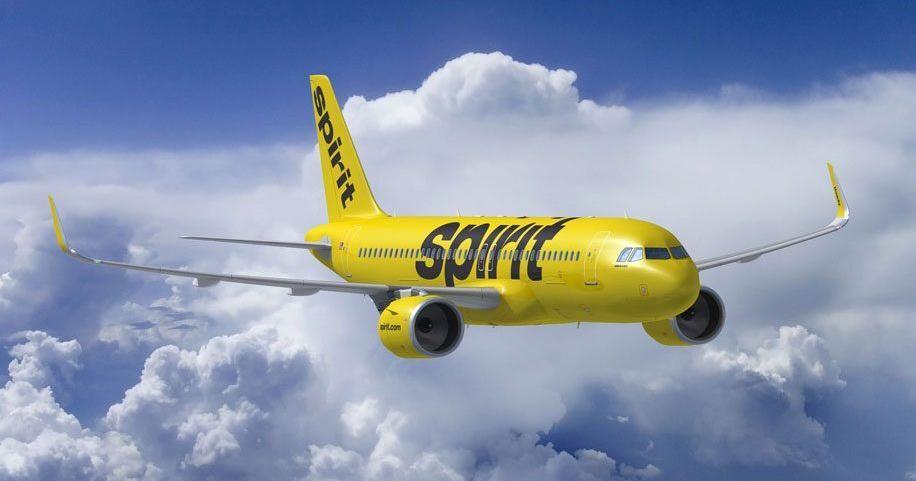One month ago today, ultra low-cost carrier Spirit Airlines declared Chapter 11 bankruptcy. While Spirit will continue to fly, management will be working behind the scenes to restructure its Everest-sized mountain of debt.
Spirit has experienced multiple setbacks over the past few years, including having portions of its fleet grounded due to mechanical problems with Pratt & Whitney engines, increased competition and the Justice Department’s denial of its last-ditch merger with jetBlue.
Of course, anyone who’s ever flown Spirit will tell you that the real problem with the airline is its service, or lack thereof. You get what you pay for, which in the case of Spirit isn’t much. This can be rectified by purchasing upgrades such as onboard entertainment, inflight food and beverages and seats with extra legroom. In doing so, you’ll probably end up spending as much or more than you would for a comparable ticket on a full-service airline.
Spirit’s woes are emblematic of changes in the airline industry. Low-cost and ultra low-cost carriers, long the industry’s engine of growth, have seen their balance sheets sag after the pandemic as passengers have come to expect more for their money. Meanwhile, mainline carriers such as American, Delta and United have experienced their best growth in years.
Spirit is not the only low-cost carrier to hit stormy weather. In 2022, Southwest Airlines suffered a humiliating meltdown during the winter travel season. Southwest is hardly the scrappy underdog it was in the past, being the third-largest airline in the world by number of passengers flown.
The plight of Southwest and Spirit recalls that of an earlier low-cost carrier, PEOPLExpress. Founded in 1981, PEOPLExpress began operations with three routes out of Newark, New Jersey to Buffalo, New York, Norfolk, Virginia and Columbus, Ohio.
The airline grew rapidly and soon established itself as a major domestic carrier, aided by fares so low it was often cheaper for people to fly PEOPLExpress than to drive. PEOPLExpress was the first airline to charge for checked bags and offered cups of coffee and snacks to passengers for 50 cents apiece.
While PEOPLExpress service was no-frills, it was hardly intolerable. PEOPLExpress’ corporate culture placed an emphasis on customer service and incentivized employee performance by giving each employee a stake in the company.
By 1984, PEOPLExpress purchased a used Boeing 747 and began operating low-cost flights to London’s Gatwick Airport. This was followed by the acquisition of more Boeing 747s and the start of transcontinental flights to San Francisco and Los Angeles, California. Now, PEOPLExpress planes could be seen thousands of miles from the airline’s operational base in Newark.
Unfortunately, the airline proved unable to sustain its rapid growth. PEOPLExpress lacked a computer reservation system. This was not an issue with PEOPLExpress when it was a small, regional airline, but proved to be a fatal flaw after it grew in size tenfold over a three-year period.
Flight delays, cancellations and overbooking soared as employee morale soured. Customers began sardonically referring to the airline as “People Distress.”
As with Spirit, the airline tried to regain lost altitude through merger. It acquired a struggling, Denver-based airline in hope of replicating its low-cost strategy on the West Coast.
Unfortunately, customers didn’t appreciate the sudden change in management, which led to an exodus of passengers and PEOPLExpress’ $300 million investment turning to smoke.
The decision was made to fold the airline into Continental in the hope of avoiding a seemingly inevitable bankruptcy. In reality, the merger was equivalent to a man in a leaky fishing boat rescuing a man drowning in shark infested waters.
Continental was little better off than PEOPLExpress and both airlines’ problems were compounded by the merger. In the end, all it accomplished was delaying the inevitable, which came three years later when Continental declared bankruptcy on Dec. 3 1990.
Whether or not Spirit meets the same fate as PEOPLExpress and flies off into the pages of history remains to be seen, but Spirit’s bankruptcy suggests there’s a limit to how much comfort and convenience people are willing to sacrifice in order to save a buck.
To their credit, Spirit’s management seems to understand this. One change the airline will be making after it emerges from bankruptcy is to invest in improved passenger amenities and comfort.

